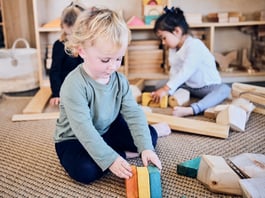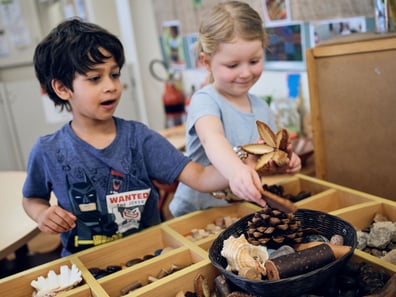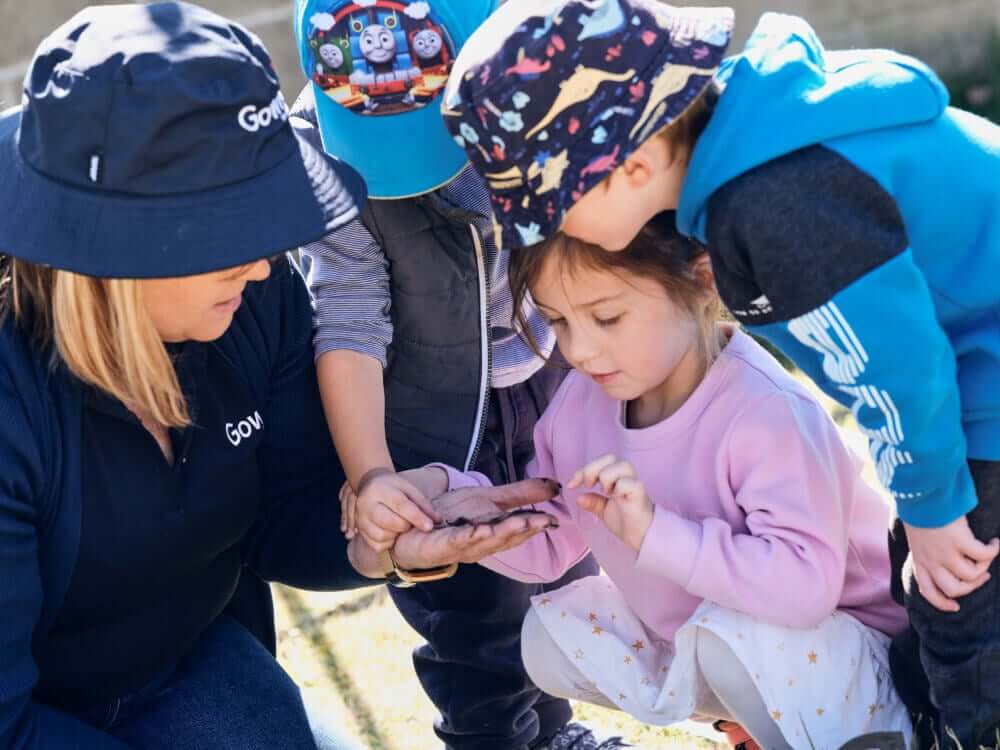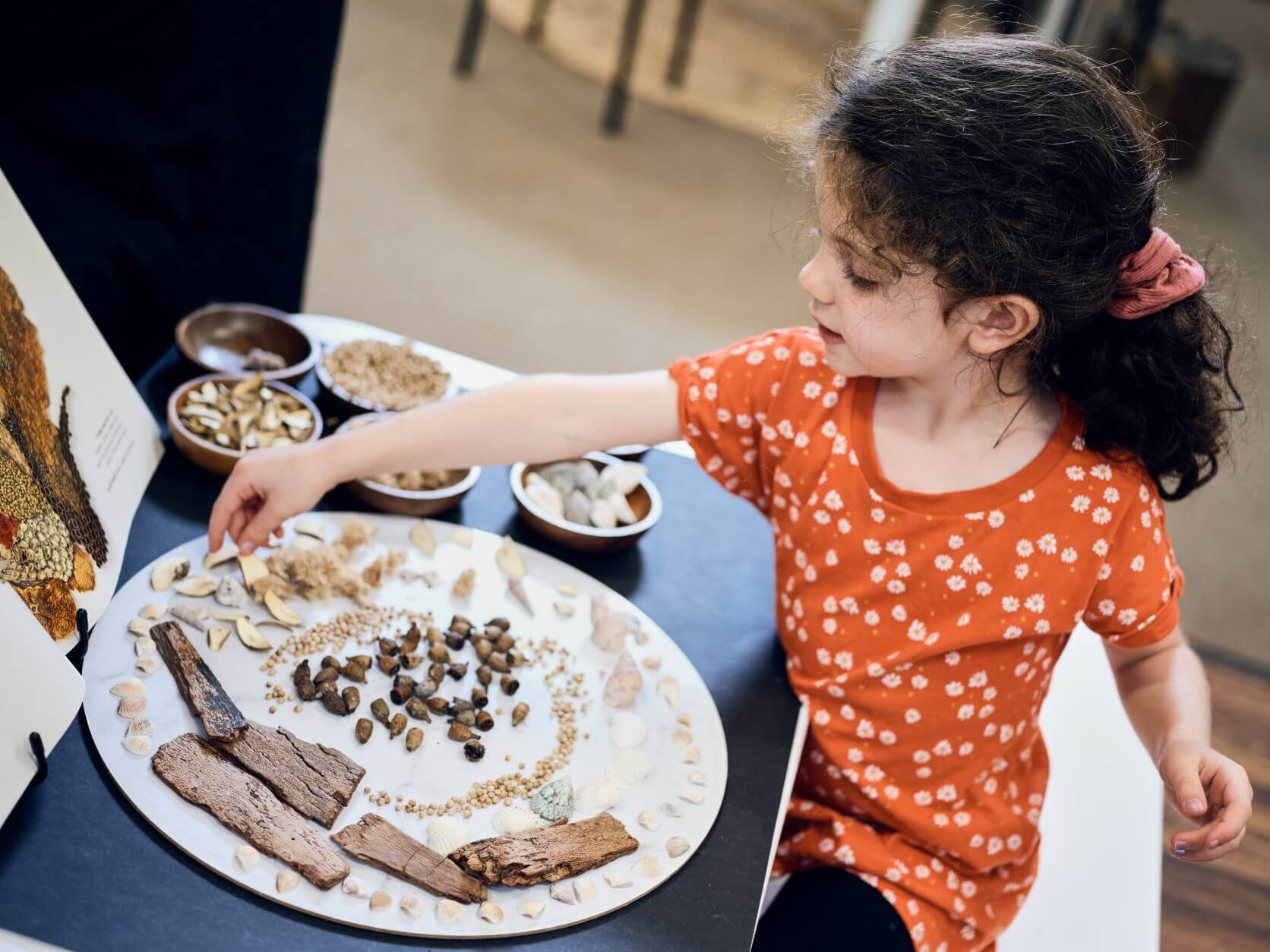Key Points
- Play isn’t just one thing. It changes over time as children master new skills and reach new stages in their development. Play is chasing a butterfly around the garden as much as it is dressing up as a lion. It’s building a tower with blocks or making music with a box.
- There are six stages of play. No stage is more important than another. Each stage builds on the next as children grow and develop.
- Play doesn’t come as naturally to parents as it does to children, but it’s important that you are present during play with your child wherever possible. It’s a great way to strengthen your bond and also presents opportunities for teaching and learning. You may even be surprised at what your child can teach you.
Play helps children learn and develop
Play is one of the best parts of childhood. But it’s not just about a fun way to pass the time. Play is how young children learn and develop.
Would you like to contribute to creating a direct and meaningful difference in the lives of children and the broader community?
Throwing a ball or jumping like a kangaroo? They’re both great for developing gross motor skills. Playing schools or creating a pretend cafe? These will give their communication, social and emotional skills a boost. Spending the day doing puzzles? Hello, problem-solving skills. No matter how chaotic or mundane your children’s play may seem, there’s more to it than meets the eye.
There is some predictability in the types and stages of play as they are progressive in nature. However, it’s important to remember that every child is different. Every child will develop - and play - at their own pace.
We’ve created this overview below so you can help support your child’s development through play.

What is Play?
There is this wonder about childhood and seeing the world through a child’s eyes. They inherently find fun and opportunities for play in everything they do.
According to Piaget’s theory, play is integral to the development of intelligence. In the Reggio Emilia approach, children learn through play.
Play isn’t just one thing. It changes over time as children master new skills and reach new stages in their development. Play is chasing a butterfly around the garden as much as it is dressing up as a lion. It’s building a tower with blocks or making music with a box.
Play can be loud and boisterous or quiet and subdued. It can be as simple as waving a hand or as complex as a game guided by indecipherable rules that change
But play is never just one thing. Behind a baby waving their hand is the very early stages of play and development. Behind that impossible game is a child learning sequencing and social interactions.
Types of Play in Early Childhood
If you think about how your child plays, you’ll know that it’s not always the same. On any one day, they can play in many different ways. That difference is even more extreme if you compare their play from month to month or year to year.
That’s because there are many different types of play. There are also a number of stages of play. What’s the distinction between the two? Type of play refers to the activity the children are doing when they are engaged in the play. Stages of play are progressive and related to the social interaction involved in the play or a particular characteristic that defines the play.
The Stages of Play
There are six stages of play. No stage is more important than another. Each stage builds on the next as children grow and develop. As we’ve already mentioned, every child is different. Some children will develop a little faster than others. Some will reach one stage quite quickly but may then take longer to reach the next stage.
Unoccupied Play
This is the first stage of play that starts from birth to three months of age. Unoccupied play doesn’t even look like play at all but it is absolutely the foundation of future play.
What does it look like? It could be random movements, arms and legs waving in the air, a waving hand or just observing their surroundings.
It’s something babies do instinctively, so as a parent you don’t need to do anything in particular to encourage unoccupied play. Just enjoy watching your baby start to explore movement and their surroundings.
Solitary Play
 Also sometimes known as independent or non-social play, solitary play usually happens when your child is 2 to 3 years old but common in children of all ages.
Also sometimes known as independent or non-social play, solitary play usually happens when your child is 2 to 3 years old but common in children of all ages.
Solitary play is when a child plays alone. It could involve playing with toys or puzzles, drawing, role playing or play types depending on their age. Through solitary play children develop confidence, self-reliance and creativity. Children in solitary play usually won’t take any interest in other children around them.
Independent play toys can be anything from puzzles to blocks, crayons and paper or stuffed toys. Whatever your child is interested in and able to play with independently.
Onlooker Play
Onlooker play, or spectator play, is all about a child watching other children and adults play without actually joining in. It’s common in toddlers or younger children who are still developing language skills.
Often parents can worry about why their child isn’t participating in the play but don’t underestimate the importance of this stage. Children are learning how to play by watching and listening. They are also building confidence to join the play when they’re ready.
If you see your child in onlooker play, know that it’s a normal stage and all part of child development.
Parallel Play
When two children are playing next to each other but not together, this is parallel play. It usually happens around 2 to 3 ½ years of age.
The children may watch each other and occasionally alter what they are doing based on their observations or they may start to mimic the other child. However, in parallel play, the children won’t influence the other’s play as they would if they were playing together.
As an example, two children could be playing with building blocks on the floor. They are both building their own creations and learning socialisation skills but they are both working independently of the other.
Associative Play
At around 3 to 4 years of age, children may start to engage in associative play. At this stage, they are starting to develop more interest in their peers and learning the rules of socialisation, such as sharing and cooperation.
Associative play is often unstructured. Children may be playing their own games or with their own toys, such as in parallel play. The difference with associative play is that a child will start to engage with other children.
Building on the above example of the blocks. In the associative stage, the children will both be building their own creations. The difference is, they may ask to borrow blocks that the other one was using. Or they may decide to join their creations to make a bigger one. This is often the start of early friendships.
Cooperative Play
When children work together towards a shared goal, that’s cooperative play. It usually starts around 4 to 5 ½ years of age. It’s the culmination of the previous stages and helps children to further develop their communication, sharing and teamwork skills.
around 4 to 5 ½ years of age. It’s the culmination of the previous stages and helps children to further develop their communication, sharing and teamwork skills.
Unlike associative play, cooperative play is more organised. The children will each have a role and there are established rules that guide the play. Whether it’s doing a puzzle or a role-play game, the children want to play with each other and are all engaged in the shared activity.
Other Types of Play
Within each stage of play, there are many other types of play where children will engage in different activities. Some children will be more interested in certain types of play over others and they may engage in more than one type of play at a time.
Competitive Play
Board games or sports games are examples of competitive play. These are games with rules and guidelines and there are winners and losers.
Children develop teamwork, turn-taking, emotional regulation and being a good sport from competitive play.
Constructive Play
Building a tower, assembling a pillow fort or making a sandcastle are all types of constructive play.
In this type of play, children develop their skills in persistence, planning and cooperation. They need to problem-solve to stop their creations from collapsing and they need to be adaptable to work around roadblocks in the process.
Dramatic Play
In dramatic play, children come up with imaginary scenarios in which to play. They might be a spy or a chef or a police officer or a knight. They get their imaginations working and explore their curiosity. Dramatic play is also known as pretend or fantasy play.
Dramatic play helps children to develop their language skills and how they express themselves. Because they are putting themselves in someone else’s shoes, it also helps them with building empathy.
Physical Play
Climbing, throwing, running, jumping and skipping. These are all types of physical play, also known as motor play.
Physical play encourages children to be active and build their gross and fine motor skills, all important for healthy growth and development.
Symbolic Play
Symbolic play involves using one object to represent another. During dramatic play, children will also often engage in symbolic play. They may use a ruler as a sword or a round cushion as a steering wheel.
This type of play allows children to tap into their imaginations and explore their creativity. They learn problem solving and adaptability.
Exploration Play
 Exploration or investigative play involves learning about new materials, usually by smelling, touching or even tasting them. There is a physical element to exploration play. Rather than just looking at an object and studying it, they experiment with it physically and try to do different things with it.
Exploration or investigative play involves learning about new materials, usually by smelling, touching or even tasting them. There is a physical element to exploration play. Rather than just looking at an object and studying it, they experiment with it physically and try to do different things with it.
This type of play is all about new sensations and they learn about new materials. They also learn that they can change objects or sensations by manipulating them.
Ritual Play
Ritual play involves rhythmic repetition of sounds, words or actions. It may be accompanied by exaggerated body movements.
This is a form of self-expression and can also be an enjoyable type of play for children.
Role Play
Role play and dramatic play are similar in that they both involve mimicking or exploring different characters. However, role play is less intense in nature. Rather than taking on the personality of another character, in role play a child might pretend to cook dinner or scan items through a checkout.
This helps children to explore different ideas, use their imagination and build their confidence. This can be a very social type of play or it may be play that a child engages in independently.
Language Play
Even before a child learns to talk, they can engage in language or communication play. This is when they are learning to play with sounds, start to form words as well as other non-verbal communication such as gestures. It usually involves rhymes and songs or things like miming or using hand signals.
The benefit of language play is that it helps children to build the foundation of their communication skills. It also helps them to develop their interpersonal and social skills as they learn to communicate with others.
Practice Play
Practice play is a simple way for children to work out how things work. They might repeatedly shake a toy or jump up and down in the dirt to see what happens.
Through practice play, children learn how things work. They learn trial and error and gain the confidence they need to try new things.
Expressive Play
Expressive or creative play is a way for children to express themselves. This might be through drawing, singing, playing a musical instrument or colouring.
Through these activities children are exploring new ideas and ways of self-expression. It’s also a way for them to experiment with and learn new emotions.
Sensory Play
In sensory play, children engage their senses to see how things taste, smell and touch, and explore texture, colour and shape. Think of a baby putting everything within reach into their mouth or a toddler diving into a bowl of jelly with their hands.
It’s in the name - sensory play stimulates the senses. It might seem messy but sensory play is really important for children. It can help with building nerve connections in the brain and with the development of fine motor skills.

Mastery Play
When a child is learning a new skill, they will practice and practice until they master it. Whether it’s learning to ride a bike or throw a ball they will preserve until they perfect it. This is mastery play.
Obviously mastery play has the benefit of learning a new skill. But it also helps to boost confidence and give a sense of accomplishment.
Recapitulative Play
There are aspects of the history of human evolution that are passed on through our genes. Recapitulative play explores this history and the associated stories and rituals. For example., building a shelter or telling stories around an outdoor fire.
The benefit of this connection to history is that it allows children to practice fundamental skills and tap into their instincts.
Digital Play
Also known as technology play, this involves video games, tablets and engaging with digital content.
While it often gets a bad rap, it can also have benefits in modern learning. Technology is here to stay so it’s important children understand how to use it.
Have you ever contemplated embarking on a career in early childhood education?
How Parents Can Engage in Play
Play doesn’t come as naturally to parents as it does to children. It’s not uncommon for parents to say they are bored by play or they struggle to engage in play with their children for lengthy periods.
However, it’s important that you are present during play with your child wherever possible. It’s a great way to strengthen your bond and also presents opportunities for teaching and learning. You may even be surprised at what your child can teach you.
How can you support your child through play? Here are some ideas:
- Create a safe and positive environment for your child so they can freely explore with minimal intervention.
- Be mindful of what is appropriate for your child’s age. For example, children under 3 years of age will find it very challenging to share.
- Try to let your child guide the play rather than you giving too many directions. It can be tempting to step in and show them how to do something but the real learning comes when they figure it out for themselves.
- Don’t be afraid of your child getting dirty - go with the flow.
- Talk to your child while you’re playing together. Explain what they’re doing and it will help with their language development.
Most of all, you can enjoy playing with your child. Make precious memories, laugh together and have fun! Play is supposed to be fun. Yes, there is a learning element. Given the space and time they will learn new skills as they play.
If you have any questions about the types of play your child will engage in at our early education centres, please contact us, we would be happy to talk to you about our approach to learning and play.
Spanning across more than 30 locations in Sydney, greater Sydney, regional NSW, and even Canberra ACT, this opportunity could mark the beginning or progression of your career in childhood education with Gowrie. Embark on a rewarding journey and take that crucial step forward.







